UPDATE! The winner of the autographed copy of The Great Call of China is Karen Kincy! Congratulations, Karen! Thanks to everyone who entered! Visit CyntheaLiu.com for more about the virtual book tour and new giveaways!

Today’s the day!
The release of Cynthea Liu’s debut novel
The Great Call of China!
And if you’ve come for the release party…
…you’ve made it to
the right place!
We’re celebrating all day long with:
- An exclusive interview with Cynthea, answering writer’s questions
- An autographed book giveaway
- Free-Tique, Teeny-Tique & goody bag giveaways
- An extended party invitation to Cynthea’s website where you can view behind-the-scenes videos, play games and win The Great “Haul” of China!
Yeah, yeah, there’s some rules. But they’re fun! (Snoop’s in charge.) And they’re after the interview. So let’s get right to it…
 If you could describe your writing style in one word, which word would it be?
If you could describe your writing style in one word, which word would it be?
~ Suzanne Young
Verbose.
I wish it weren’t true! Other adjectives might be commercial or funny. But that all depends on what I’m writing.
What’s your juiciest behind-the-scenes story on the making of The Great Call of China?
~ Jennifer Hubbard
The making of THE GREAT CALL was quite uneventful until the very last round of revisions. The publisher requested I shorten the book by about 15K words, and the deadline was 7 days away. Not long after that announcement, I received my editorial letter for the last round of PARIS PAN revisions, asking for a 20K cut and I had ten days to do that. To top it off, I was a new mother, nursing a six-month-old baby about eight times a day. That’s a lot of numbers, folks!
So you can imagine that I subsequently stroked, then regressed into a six-month-old thumb-sucker myself. In the end, I managed to get an extra week, cut down THE GREAT CALL by about 10K words and PARIS PAN by another 10K. It was the toughest three weeks of my writing career.
Moral of the story? Don’t be verbose if you can help it! J
How do you find the time to write, promote your writing, and be so active in the writing community?
~ Karen Kincy, Jennifer Hubbard, Bettina Restrepo
I have the wonderful help of a college student named Julia who comes in each weekday while I go off to work, build my writing career, and interact with all of you. Though, admittedly, the last couple of months, I’ve been working on just about everything, but the writing.
 Also I can run on less sleep than I ever dreamed possible. Baby Liu has trained me well!
Also I can run on less sleep than I ever dreamed possible. Baby Liu has trained me well!
Snoop, of course, also helps out by taking on meals and housecleaning.
Do you ever sleep? How did you get to be so awesome?
~ Jennifer Hubbard
Aw, that’s sweet! Yes, I do sleep (sometimes with my eyes open). And thanks to Baby Liu and Starbucks’s Caramel Macchiatto, I only need about about 5-6 hours a night. I do take days off though, which is great for recooperating.
What has been a rock bottom moment for you as a writer, and how did you climb higher?
~ Karen Kincy
The rock bottom moment came about two years after I started writing. It was February, 2006. I had racked up a lot of rejections, and in that time, I felt like I had been close, but not close enough, you know? I wondered if I would ever sell anything. Sure, I know, many writers go through much more rejection. But that’s all relative. When it’s YOUR dream, when it’s YOUR goal, everything is way worse. It doesn’t matter if it’s two months or 10 years. For me, I had been subbing everything from PB to MG. I thought maybe I should try something else. I put together a YA proposal for a series. What came back? A rejection that stated my writing was “generic” and “lacking pizzazz.” GASP!
That rejection really stung even though the editor had been right about the submission. After that, I promptly made an appointment at get my hair done. I was tired of staring at my rejected-self in the mirror. I was going to dye my hair purple (a tasteful deep shade of purple), and I was confident I would walk out of the salon a better writer.
Of course, the new hairstyle didn’t improve my writing, but a group-scream on the Blue Boards helped. I tried to move on, but the rejections continued. Nine months after that, I confessed to my SCBWI regional advisor that I was ON THE VERGE (… of breaking down!) . I even thought about forming a group called ON THE VERGE so we could all drink together. Then the next month, I turned in another revision for PARIS PAN (the fifth major round of revisions), totally unsure of what I was doing. Seriously, I was thinking I should try something else on as a new career – like becoming an agent, or maybe doing Snoop’s laundry…. Then PARIS PAN sold at auction in a two book deal to Putnam. A couple of weeks later, the same editor who had called my writing generic bought a different series book I had pitched with my agent. That book was THE GREAT CALL OF CHINA.
What was your favorite book as a child? As an adult?
~ Nan Marino
I had sooooo many favorites that I can’t possibly pick just one. But as a kid, I was a huge fan of any book that featured animals. Black Beauty, Trumpet of the Swans, The Mouse and the Motorcycle. The first novel I completed, actually (which is in a metaphorical drawer at the moment) is about a talking dog.
As an adult, I haven’t read anything that has touched me as much as the books I read as a child. But … I did read HARRY POTTER in my mid-twenties. I just had to see what the hoopla was about, and that book got me in touch with the left-side of my brain again, a side I hadn’t used much since junior high. So thank you J.K. Rowling for reminding me that I am very much a kid at heart.
Do you dedicate a certain amount of time to marketing each day, or a certain day or week? AuthorsNow! is an incredible resource. What plans do you have for its future?
~ Bettina Restrepo
I SHOULD be dedicating time each day to marketing, but I am easily distracted! In fact, I think I suck at marketing. Seriously, I don’t really like to pitch my own stuff. The whole idea of walking into an indie bookseller and introducing myself and my books freaks me out. I much prefer to just talk to people online about nothing much. I find Facebook and Twitter—my latest time-sucks–wildly entertaining.
As for AuthorsNow!, I just answered that question on Cynsations. In short, my main hope is that the web site continues to grow as a resource, and that more and more book enthusiasts use it to help them find the books they’re looking for!
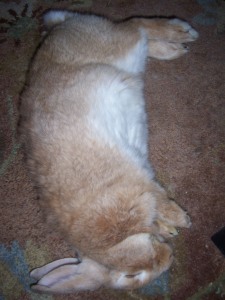 How old is your bunny Snoop, and where did he come from?
How old is your bunny Snoop, and where did he come from?
~ Karen Kincy
Snoop is about 6 years old now. That makes him a middle-aged bunny, maybe nearing retirement. He was adopted from the House Rabbit Society, an organization that does awesome work for bunnies like Snoop who needed homes. Little known fact: Snoop had actually been adopted by someone else before I came along. Apparently, Snoop had not been getting along with other bunny housemates in his new home. (Can you imagine that?) So he had to be adopted out again.
Now he is happily ruling my roost, and he doesn’t even mind Baby Liu all that much. Another little known fact: Snoop used to have a different name, but I didn’t think it fit his personality. He was much too forward and nosy for his old name. Can anyone guess what his old name was?
Snoop is uncommonly wise for a bunny. Are there special scientific experiments involved?
~ Jennifer Hubbard
Ha! Snoop drinks a powerful shake every morning. Packed with all that leafy-green goodness. Maybe that’s what it is.
How did you and Snoop become a critiquing team?
~ Nan Marino
It started in my first blog entries in 2005. I had just come out to the world publicly as a writer, and I felt incredibly naked with only me blogging in my entries. So scary. Snoop stepped in and helped out. His first spoken word on my blog was … “BURPPPPPPPPPPP!!!!!!!!!!!” He still likes to do that now and then.
Does listening to Snoop chomp on the manuscripts he critiques help you improve your own writing?
~ Roxanne Werner
 Great question. In some ways, it has opened my mind to new ways of writing, but I’m not sure it has influenced my own that much. Writing style is your unique fingerprint. It’s like you can’t do anything to change that unless you perform major surgery or something. My crit partner Tammi has her own fingerprint as does my other crit partner Beverly. I’ve seen many, many prints, but that doesn’t really improve the way I write. If I see something really good, I just feel depressed about it. I promptly proclaim, Why can’t I write like that?!
Great question. In some ways, it has opened my mind to new ways of writing, but I’m not sure it has influenced my own that much. Writing style is your unique fingerprint. It’s like you can’t do anything to change that unless you perform major surgery or something. My crit partner Tammi has her own fingerprint as does my other crit partner Beverly. I’ve seen many, many prints, but that doesn’t really improve the way I write. If I see something really good, I just feel depressed about it. I promptly proclaim, Why can’t I write like that?!
So no, sadly I can’t absorb genius from other people’s writing. I can only HOPE that I learn to become that good.
Does Snoop feel rejected when you get a rejection? Vannie, aka Pooper Dude (our bunny), absorbs the anxiety of the household, and is skittish for days afterward. How do you both deal?
~ Nancy Viau
Yes, Snoop is very tuned in to my emotions. He has offered his furry shoulder to cry on more than once. We find that TV is also great way to take one’s mind of things, as is an uncommonly good veggie buffet.
When are you going to write a story starring Snoop? Does Snoop (or a bunny) appear in either of your upcoming novels?
~ Stephanie Ruble
Awesome question. Snoop has yet to star in his own show in my manuscripts. He quite likes flaunting his stuff on the Internet without worrying about being rejected by someone else.
Also if you didn’t know, Snoop has written a couple of books about himself already. There’s The Life and Times of Snoop Bunny Bun. And Feed Me about a Chinese girl who starves one helpless bunny into rebellion. He sold that one in a five-book meal, to Rupert Bun-doch at auction!
He is rather talented.
Do you have a big book idea inside you that you know you want to write “someday” but its time has not yet come?
~ Jennifer Hubbard
I have this image in my mind – really it’s just a picture in my head, nothing more - I hope I will write about that picture one day. But no, the time has not come. When it does, you will know!
How do you ensure that your writing appeals to your young audience?
~ Julie M. Prince
I guess I won’t know anything for sure until kids and teens have my books in their hands. While writing the manuscripts though, I focused on putting down stuff that entertained Snoop and me. For younger kids, that usually means something humorous. Bonus, if there’s an element of mystery.
For THE GREAT CALL OF CHINA, a young adult book, I tried to write something that reflected what I might have been thinking or feeling when I was a teen.
 Did you travel to China as part of your writing process for The Great Call of China?
Did you travel to China as part of your writing process for The Great Call of China?
~ Susan Lorene
Yes, I did. I went there twice as a matter of fact. Once during the proposal stage and again before I started writing the rest of the book. My brother lives in Xi’an (where the story is mostly set) and he took me around town. I got to see most of the city’s hotspots. AND I even got to interview a whole class of Chinese teens about relationships, food, school—everything! You should have seen everyone blush when we discussed romance.
Another memorable experience in Xi’an was getting to teach English to a bunch of kindergartners. You should have seen how big the kids’ eyes got when I told them funny stories about Snoop. They couldn’t believe a bunny likes to watch TV!
But it’s true!
When you were a child, what did you want to be when you grew up?
~ Kymberly Pelky
When I was really young, I used to declare to my parents that I wanted to be a movie star or a dancer. Then as I got older, somehow I had ideas like “doctor” and “lawyer” in my head. Could it have been years of lecturing from Mom and Dad? I think so. 
I never thought I’d become a writer until I was 28, when I realized I needed to do something wildly different than the job I had. I was a technology consultant who had spent the last six years flying back and forth between cities, 4 days a week. And if I wasn’t flying, I was fighting heavy traffic for hours on end, and I do NOT do well with long commutes.
Now I never have to leave my house unless it’s on fire. YAY!
What are your three top tips on how to succeed in this business?
~ Tammi Sauer
How to SURVIVE? Or how to succeed? Not sure I’ve got “succeed” down yet. Call me when I’ve won the Newbery, and we’ll talk. Okay, it’s not that you have to win a Newbery to succeed, but really, I feel like I’ve only just begun in this biz! There is still a long road ahead.
How to survive though? I think I have that one covered. You need to have plenty of perseverance, a thick skin, and a desire to grow and learn.
What do you want readers to know about The Great Call of China before they delve into Cece’s adventure?
~ Tara Lazar
Nothing actually. Don’t even read the jacket because I think jackets can be terribly misleading. Just read it and enjoy Cece’s story! Oh, and buy more copies for your friends, and their friends, and their dogs, and their bunnies …. (see? That’s me, doing some marketing. YUCK! I feel so sleezy now!)
Cynthea! You’re anything but sleezy!
But hey, I’ll let folks know that The Great Call of China is available online at Amazon, B& N.com, Borders and Indiebound, and in bookstores around the country. Get your copy now before they sell out! 
And now…the moment you’ve been waiting for…the prizes!
Here are the rules! Take it away, Snoop!
 To win an autographed copy of The Great Call of China, please leave a comment by 11:59pm (EST) tonight, February 19th. I, Snoop, will draw a winner with the help of Random.org. And if you’d like to guess my original name, and you nail it, you’ll get two extra entries.
To win an autographed copy of The Great Call of China, please leave a comment by 11:59pm (EST) tonight, February 19th. I, Snoop, will draw a winner with the help of Random.org. And if you’d like to guess my original name, and you nail it, you’ll get two extra entries.
To get a Teeny-Tique or win one of three half-page critiques…plus a goody bag…listen to this…
You know how people say you can lose an editor or agent at line one? Well, here’s your chance to test your first line on me, Snoop. I will render a judgment with a special Teeny-Tique round of TRAFFIC COP. This means I will render a judgment of RED (stop!), YELLOW (sketchy, and here’s why) or GREEN (You’re a go!).
So think about your first lines. Don’t think they’re important?
Think again, my friend.
Now, here’s how to enter:
1. Go to CyntheaLiu.com and click on the “Party Favors” tab. You’ll fill out one form to receive the party favor and the Teeny-Tique. Include your name, email and mailing address. (Your contact info will only be used to send your party favor and to reply to your submission.)
2. In the Party Favor Request Form, there is a field labeled “Please leave a comment for the Host!” That is where you will include the book type (PB-picture book, ER-easy reader, CB-chapter book, MG-middle grade, YA-young adult) and the first line of your manuscript. (Example: PB. “This is the first line of my manuscript,” Snoop says.)
3. Click submit and you’re done. Please refrain from saying anything else in that field.




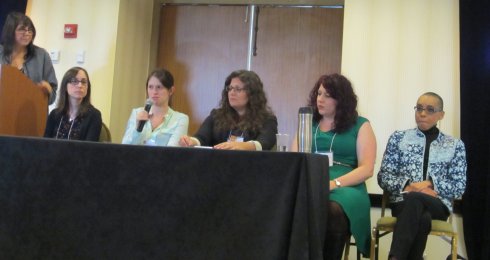
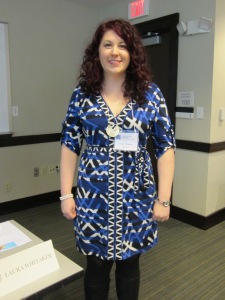


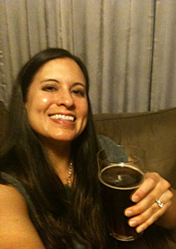





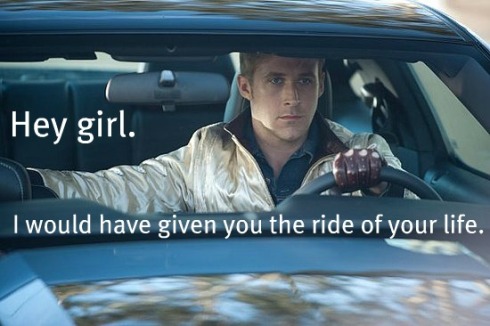




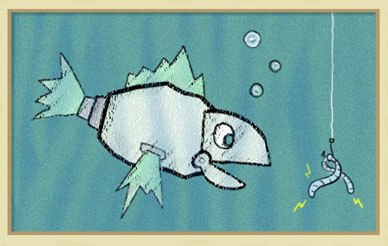
 Before I take off, let me remind you to
Before I take off, let me remind you to 

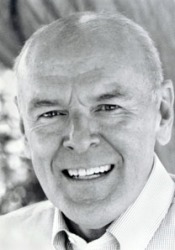 The first keynote presentation by Richard Peck, Newbery award-winning author of The Year Down Yonder, set a serious yet exciting tone for the conference. His unique voice extends beyond his books–when he speaks, he feels as big as a Shakesperean actor, filling the room, enunciating, using his entire body. (It was no surprise to learn that he belongs to a group of authors known as the “
The first keynote presentation by Richard Peck, Newbery award-winning author of The Year Down Yonder, set a serious yet exciting tone for the conference. His unique voice extends beyond his books–when he speaks, he feels as big as a Shakesperean actor, filling the room, enunciating, using his entire body. (It was no surprise to learn that he belongs to a group of authors known as the “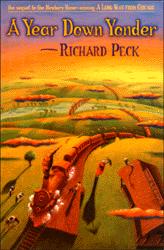 “A lot of fiction is about remembering better days.” The elder characters in Mr. Peck’s books are often patterned after the old men who frequented his father’s filling station in the 1930’s and 40’s. He recalls their conversations and makes “rough music out of real speech.” You can write in the voice of a young character, but have that young person know old people. Children want adults to be strong, but they often can’t find them.
“A lot of fiction is about remembering better days.” The elder characters in Mr. Peck’s books are often patterned after the old men who frequented his father’s filling station in the 1930’s and 40’s. He recalls their conversations and makes “rough music out of real speech.” You can write in the voice of a young character, but have that young person know old people. Children want adults to be strong, but they often can’t find them.


 Children’s book writers were treated to another fun and informative first page session this week in Princeton, hosted by the NJ-SCBWI. Editors Michelle Burke and Allison Wortche of Knopf & Crown Books For Young Readers listened to 30 first pages read aloud as they followed along with each manuscript page. Then they gave their immediate first impressions of the work.
Children’s book writers were treated to another fun and informative first page session this week in Princeton, hosted by the NJ-SCBWI. Editors Michelle Burke and Allison Wortche of Knopf & Crown Books For Young Readers listened to 30 first pages read aloud as they followed along with each manuscript page. Then they gave their immediate first impressions of the work.

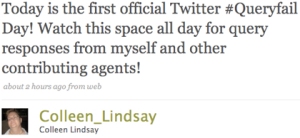 In early March, several literary agents, organized by
In early March, several literary agents, organized by 
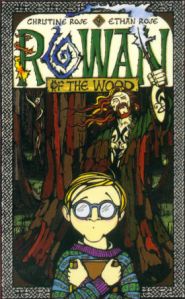 Publishing a book can be an adventure, and that’s especially true for Christine and Ethan Rose. Authors of
Publishing a book can be an adventure, and that’s especially true for Christine and Ethan Rose. Authors of 



 If you could describe your
If you could describe your  Also I can run on less sleep than I ever dreamed possible. Baby Liu has trained me well!
Also I can run on less sleep than I ever dreamed possible. Baby Liu has trained me well!  How old is your bunny Snoop, and where did he come from?
How old is your bunny Snoop, and where did he come from? Great question.
Great question. Did you travel to China as part of your writing process for The Great Call of China?
Did you travel to China as part of your writing process for The Great Call of China?
 To win an autographed copy of The Great Call of China, please leave a comment by 11:59pm (EST) tonight, February 19th. I, Snoop, will draw a winner with the help of
To win an autographed copy of The Great Call of China, please leave a comment by 11:59pm (EST) tonight, February 19th. I, Snoop, will draw a winner with the help of 


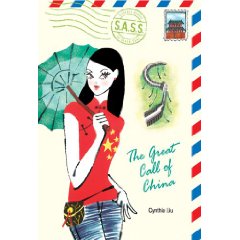 On February 19, Cynthea Liu, one of the most givingest authors in the children’s writing community, releases her debut novel in the S.A.S.S. series, The Great Call of China.
On February 19, Cynthea Liu, one of the most givingest authors in the children’s writing community, releases her debut novel in the S.A.S.S. series, The Great Call of China.

 Honestly, though, I can’t imagine ever truly giving up. I can’t imagine a day without writing. It’s just that ingrained in me. The idea of giving it all up is scarier to me than facing those tough days. Believe it or not, this is where my kids are important to my sticking to it — writing is a release and keeps me from noticing when there’s a Crayola mural on the wall or a loose hamster or ketchup on the ceiling (seriously, how do they get food on the ceiling?!).
Honestly, though, I can’t imagine ever truly giving up. I can’t imagine a day without writing. It’s just that ingrained in me. The idea of giving it all up is scarier to me than facing those tough days. Believe it or not, this is where my kids are important to my sticking to it — writing is a release and keeps me from noticing when there’s a Crayola mural on the wall or a loose hamster or ketchup on the ceiling (seriously, how do they get food on the ceiling?!).  I always get my best ideas in the shower, too. Someone once recommended a tile pencil/china marker to me. And I’ve read good things about the Crayola Floating Art Desk, too. (If you like to write in rainbow.)
I always get my best ideas in the shower, too. Someone once recommended a tile pencil/china marker to me. And I’ve read good things about the Crayola Floating Art Desk, too. (If you like to write in rainbow.) For laughs, follow Jennifer Brown
For laughs, follow Jennifer Brown 
Thank you, Tara for posting this. This was a meaty one!
Awesome, Mindy. Thanks, once again! Thanks, Tara for featuring Mindy.
More great advice!
Thanks for sharing reflections from the editor panel. What useful tips!
You’re welcome, Tina.
Thanks for all your sweet comments. I’m glad you enjoyed the editor panel info!
Thank you Tara, for letting me visit your blog again.